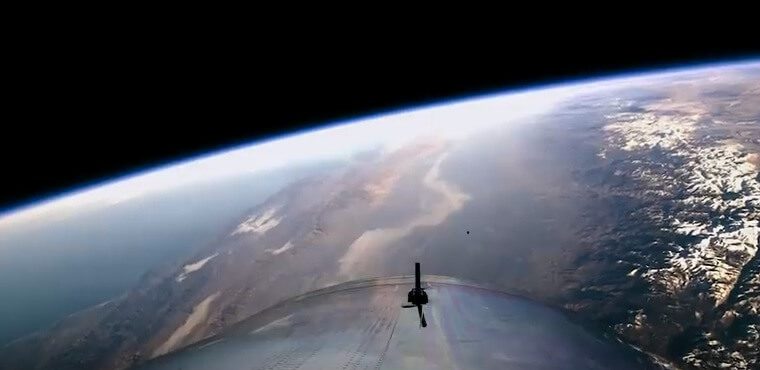The US Air Force has traditionally awarded its pilots “astronaut wings” if they have exceeded 50 miles (80km) in altitude. Others who support this limit of where “space begins” include astrophysicist and spaceflight expert Dr Jonathan McDowell. He has eloquently argued that the aerodynamic drag makes re-entry for orbital objects at this height a certainty. Nevertheless, most others, including the Fédération Aéronautique Internationale (FAI), official record keepers of aeronautical and space events, prefer to stick with the official Karman line at 100km as being the edge of space. This is the limit where aerodynamic lift becomes irrelevant because to achieve it, the craft is already at orbital velocity.
Why is this argument important? Well the Virgin Galactic space tourism operation finally breached 80km on a test flight of its suborbital space tourism vehicle, SpaceShipTwo VSS Unity, on 13 December 2018, leading some sources to claim that it had achieved spaceflight. Following the rocket plane’s drop at 43,000 feet (13km) from its WhiteKnightTwo carrier aircraft, its hybrid rocket was ignited and burned for 60 seconds, causing it to achieve a velocity of Mach 2.9 and an altitude of 83km. While the arguments will go on, at least the FAA (US Federal Aviation Administration) is convinced that “spaceflight” has been achieved. It has reportedly decided to award the two test pilots involved, Mark Stucky and C.J. Sturckow, “commercial astronaut wings”.
Comment by David Todd: For the time being Seradata will be classing this test flight as an “atmospheric suborbital flight” on its Seradata SpaceTrak database. Virgin Galactic will have to achieve 100km for Seradata to recognise it as a full spaceflight test. After more test flights, Virgin Galactic hopes to begin commercial space tourism flights from its launch base in New Mexico in 2019. However, from past experience, we believe that this timeline may be too optimistic.

The curvature of the Earth can be seen above nose of SpaceShipTwo Unity on its first flight above 80km. Courtesy: Virgin Galactic







